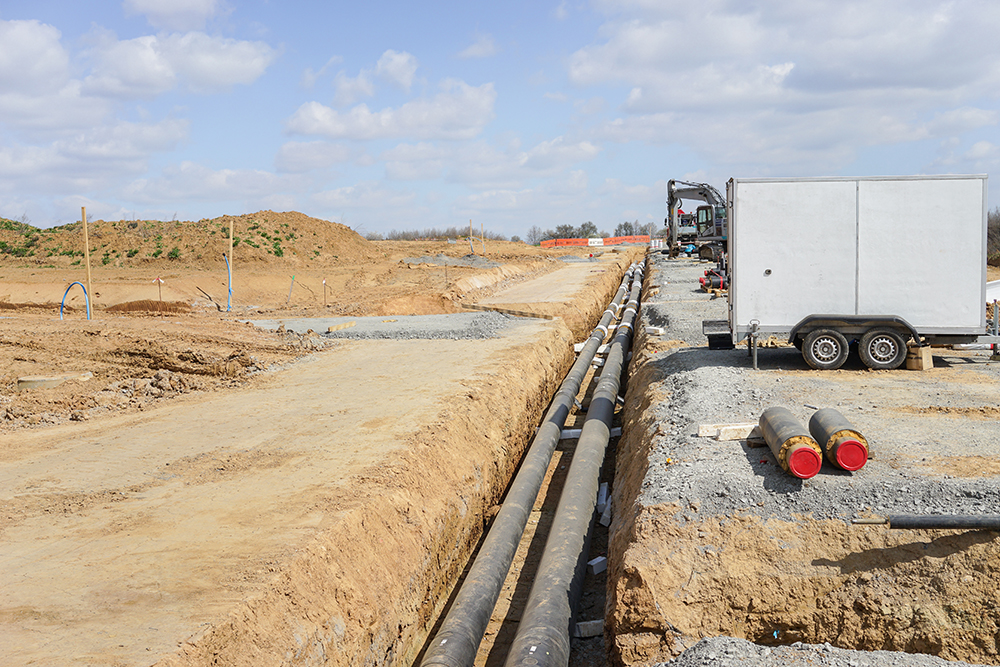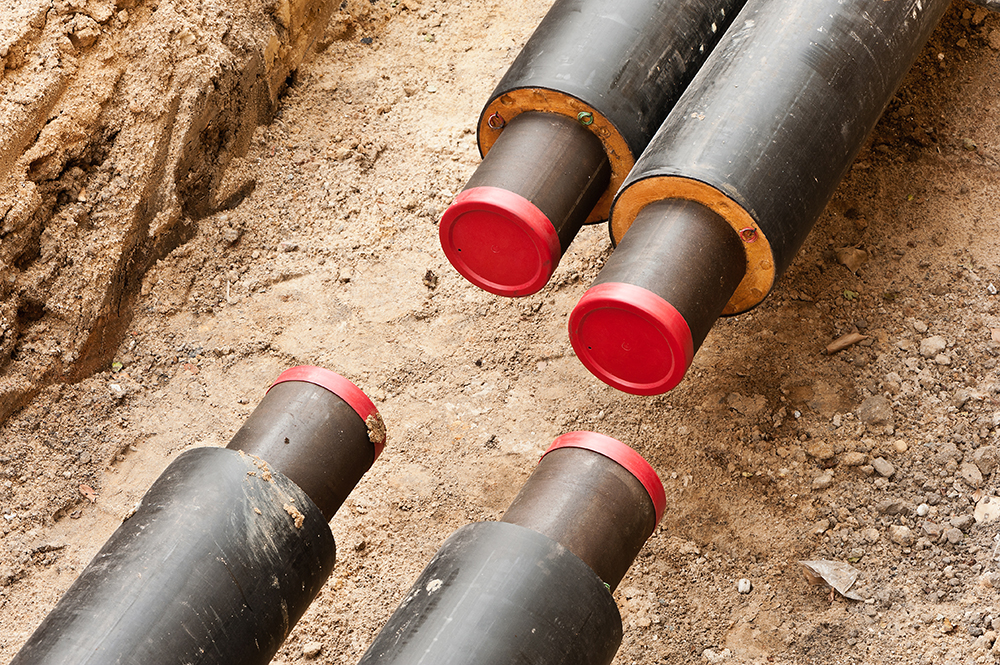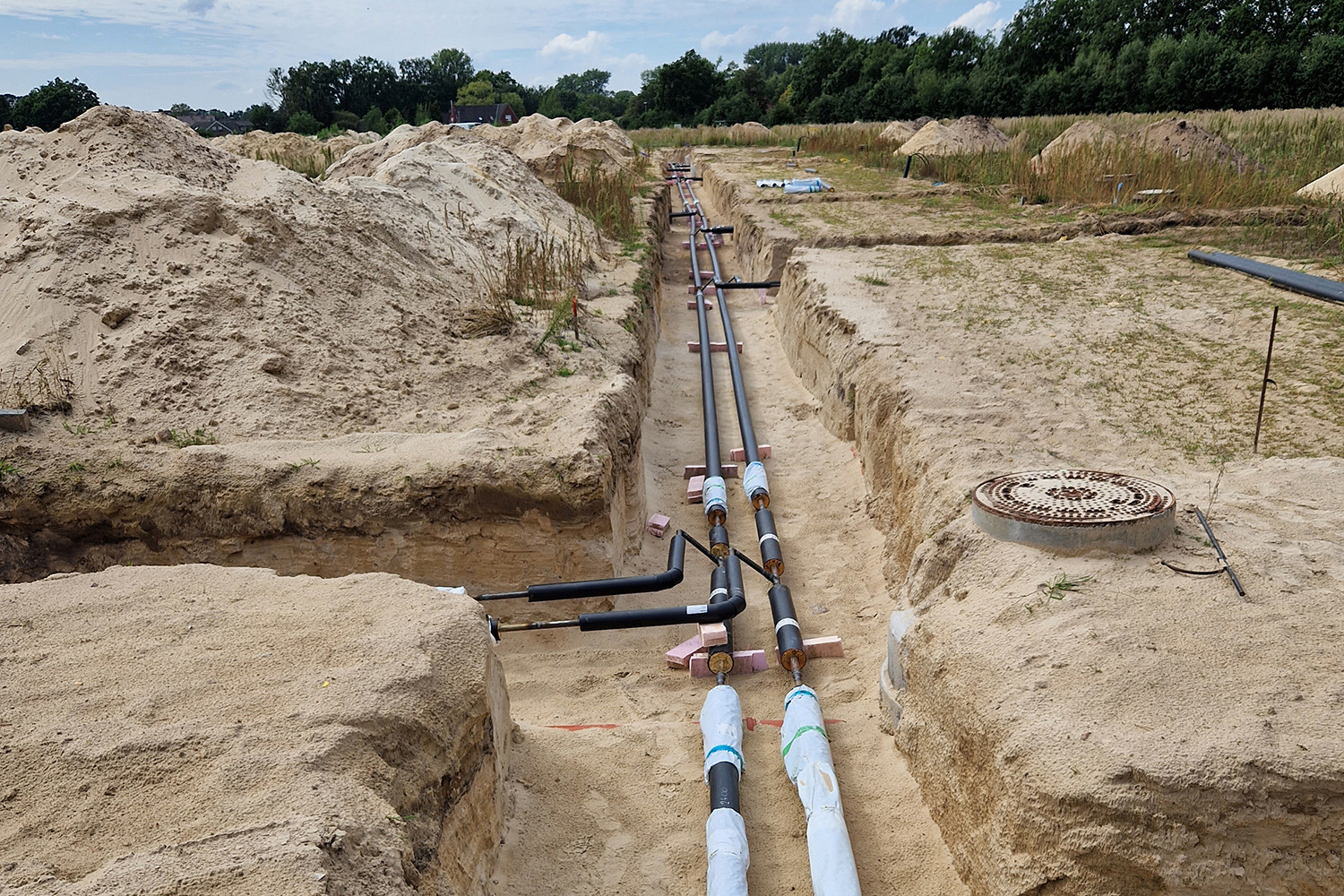Table of Contents
In times of climate crises, energy shortages and exploding energy costs, “district heating” is gaining immense importance as a heat supplier. District heating refers to the direct supply of end customers, e.g. the supply of heat to single-family homes via district heating pipelines.
The thermal energy is fed centrally from a power plant into the district heating network and transferred decentrally to the consumers by means of a suitable medium (usually water).
The heat fed into the grid can either be generated in a primary process by a purpose-built power plant or used as secondary waste heat from an existing process.
By centrally generating the transported heat, fuels can be used efficiently or saved. By using waste heat, the energy balance of a process can be improved, which in turn can save conservative fossil fuels.
Pipe network

Even though district heating networks are usually centrally located around the district heating source, the pipelines can have lengths in the range of several 10 km.
The pipelines consist of the so-called medium pipes (pipes in direct contact with the heat transfer medium), which are thermally insulated to reduce energy losses along the supply network.
The medium pipes are always laid in pairs, as the district heating transport takes place in a circuit: The heat is transported by means of a heat transfer medium from the source to the consumers in the “flow pipe”.
From the consumer back to the source, the heat transfer medium is transported in the “return pipe”. Thus, for example, every detached house receives a district heating connection consisting of a “flow” and a “return”.
Medium pipes are made of different materials and insulated depending on the application, temperature of the heat transfer medium, design of the pipe network and external conditions; plastic jacket composite pipes or steel jacket pipes are common.

Test procedures
To ensure long-term, safe and economic operation, newly laid district heating networks must be tested.
With the AGFW FW 602 worksheet, the AGFW association has published its own set of rules for district heating pipes for testing medium pipes to prove tightness and strength. This describes and requires various test procedures to be carried out on newly constructed, extended and modified district heating pipes.
The recommended methods include the test methods with overpressure:
- Differential pressure measurement method
- Pressure measurement method
- Hydrostatic test
The individual procedures differ in terms of device technology, implementation and procedure.
In addition, there are specifications and regulations regarding the pipeline material; not every procedure may be used for a specific pipeline.
In the following blog post on the district heating series, the details of the procedures that can be carried out with the smart memo are explained. In addition, advantages and disadvantages and differences in the device technology are highlighted.
Subscribe to our newsletter and stay informed
If you would like to be kept up to date with changes to regulations, new products, news on the blog and much more, please fill in the form below.

